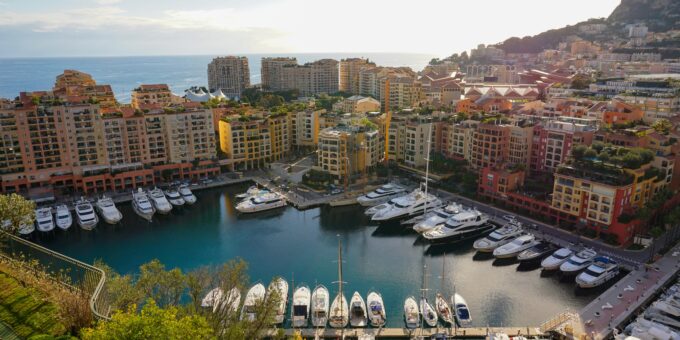
Importing a luxury yacht involves more than just signing a purchase contract and arranging shipment. It demands a keen understanding of import duties, customs valuations, and tax regulations that differ from one jurisdiction to another. Whether you’re bringing your yacht into the European Union, Australia, or Asia, each country has its own system for calculating duties and taxes based on value, origin, and intended use.
In most cases, the customs value—which includes the yacht’s purchase price, shipping costs, and insurance—determines the duty and tax base. Beyond that, registration fees, environmental levies, and inspection charges can inflate your total import bill. Knowing how to legally minimize these costs while staying compliant is the cornerstone of responsible yacht ownership.
Understanding Yacht Import Duties
Import duties on luxury yachts are typically imposed to protect domestic industries and ensure fair market valuation. These duties are calculated as a percentage of the yacht’s Customs Value (CIF)—which includes cost, insurance, and freight to the destination port. For example, in the EU, the standard duty for yachts ranges between 1.7% and 2.7%, while some countries like Thailand offer duty-free treatment but still impose VAT or GST on entry.
Countries with Free Trade Agreements (FTAs) may reduce or eliminate import duties altogether if proper certificates of origin are presented. A yacht built in Italy, for instance, imported into another EU state, will likely qualify for duty exemption, provided that the correct paperwork accompanies the import declaration.
Private vs. Commercial Yacht Importation
The intended use of your yacht significantly affects your tax obligations. A private yacht imported for personal recreation generally incurs full VAT and duty, while a commercial yacht used for charter or passenger services may benefit from tax exemptions or deferrals.
For example, France’s “Commercial Exemption” allows non-EU flagged commercial yachts to apply a reverse-charge mechanism, avoiding upfront VAT payments. However, owners must maintain logs and proof that at least 70% of voyages occur outside EU territorial waters.
Temporary Importation and Inward Processing Relief
If your yacht is only entering a country temporarily—say, for a regatta, refit, or tourism season—you can apply for Temporary Admission or Inward Processing Relief (IPR). These schemes allow entry without paying full duties or VAT, provided the yacht leaves the country within a specified period.
In the European Union, non-EU yachts can stay duty-free for up to 18 months under Temporary Admission. Similarly, Australia and Thailand offer short-term import concessions for tourism or repair purposes.
Role of Free Trade Agreements
FTAs can dramatically reduce your yacht import costs. By certifying the yacht’s country of origin, you can access reduced tariffs or even total exemption. The EU, for instance, has active FTAs with countries like Norway, Iceland, and Switzerland, where yachts built in these regions can be imported without additional customs duties.
Always verify your eligibility under trade agreements before import. Missing a simple certificate of origin can cost you thousands in unnecessary duties.
Choosing the Right Flag State
Where you register (flag) your yacht can affect taxation, privacy, and legal obligations. Popular flag jurisdictions like Malta, Cayman Islands, and Isle of Man offer reduced VAT schemes or deferred payment options for commercial yachts.
For example, the Malta Leasing Scheme allows partial VAT payment based on the percentage of time a yacht is used in EU waters, effectively lowering the VAT rate from 18% to around 5.4%.
Calculating the True Landed Cost
Importing a yacht involves a chain of expenses beyond the purchase price:
| Component | Description |
|---|---|
| Purchase Price | The yacht’s base cost |
| Shipping & Freight | Transport to the destination country |
| Insurance | Marine coverage during transit |
| Import Duty | Tariff based on customs valuation |
| VAT / GST | Consumption tax applied after duty |
| Broker & Legal Fees | Handling, documentation, and compliance |
| Registration & Certification | Costs of flagging and licensing |
Adding these components gives you the true landed cost—the real price you’ll pay before the yacht sails under your ownership.
Common Pitfalls to Avoid
-
Undervaluation: Declaring a lower price to reduce tax can result in fines or yacht seizure.
-
Improper Classification: Misstating commercial use can lead to VAT backcharges.
-
Lack of Documentation: Missing builder’s certificates or proof of VAT-paid status complicates future sales.
-
Incorrect Flag Selection: Some flags attract higher scrutiny or lack favorable treaties.
The best prevention? Hire experienced customs brokers and maritime lawyers who understand the nuances of international yacht importation.
Strategies for Minimizing Yacht Import Costs
-
Utilize Free Trade Agreements: Confirm the yacht’s origin qualifies.
-
Apply for Temporary Admission: Useful for short-term stays or tourism.
-
Register Commercially: Chartering the yacht may trigger VAT exemptions.
-
Structure Ownership Smartly: Offshore holding entities can manage tax exposure.
-
Use Deferred VAT Schemes: Especially in Malta, Monaco, and the Isle of Man.
Yacht Import Rules Around the World
-
EU: Import duty 1.7–2.7%, VAT 20–23%.
-
Singapore: 8% GST applies, no duty-free relief for private yachts.
-
Thailand: 0% duty, 7% VAT.
-
Australia: 5% duty, 10% GST, but concessions for large charter yachts.
-
Indonesia: Luxury tax up to 75% (with possible exemptions for tourism).
FAQs
How can I avoid paying full import duty on my yacht?
By using FTAs, temporary admission, or commercial registration, you can significantly reduce or defer duty payments.
What documents do I need for yacht importation?
Invoice, builder’s certificate, proof of origin, export declaration, insurance, and freight documentation are mandatory.
Can I import my yacht tax-free if it’s used for charter?
Yes, many jurisdictions allow VAT or GST exemptions for commercially operated yachts, subject to specific use and documentation.
What happens if I fail to pay import duties on time?
Delays or underpayments can result in heavy fines, interest charges, or vessel detention by customs.
Do I have to pay VAT if I re-import a previously VAT-paid yacht?
Not if you maintain ownership and can prove its VAT-paid status with original documentation.
Which country has the lowest yacht import tax?
Thailand and Malta are currently among the most favorable jurisdictions for low yacht import taxes.
You Can Also Read : How to Use Offshore Structures for Luxury Yacht Tax Planning
Sailing Smart with Yacht Tax Management
Owning a luxury yacht is the ultimate symbol of freedom and prestige—but managing its importation wisely is the mark of true sophistication. By understanding how to manage import duties and taxes on luxury yachts, you safeguard your investment, ensure compliance, and gain the peace of mind to enjoy your vessel without bureaucratic turbulence.
Plan early, document meticulously, and consult professionals who specialize in maritime taxation. When handled smartly, your yacht will be more than a luxury—it will be a financially sound masterpiece that sails smoothly under any flag.
